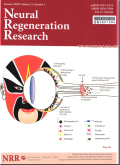摘要Fohlmeister-Coleman-Miller model of retinal ganglion cells consists of five ion channels; these are sodium channels, calcium channels, and 3 types of potassium channels. An increasing number of studies have investigated sodium channels, voltage-gated potassium channels, and delayed rectifier potassium channels. However, little is known about calcium channels, and in particular the dynamics and computational models of calcium ions. Retinal prostheses have been designed to assist with sight recovery for the blind, and in the present study, the effects of calcium ions in retinal ganglion cell models were analyzed with regard to calcium channel potential and calcium-activated potassium potential. Using MATLAB software, calcium conductance and calcium current from the Fohlmeister-Coleman-Miller model, under clamped voltages, were numerically computed using backward Euler methods. Subsequently, the Fohlmeister-Coleman-Miller model was simulated with the absence of calcium-current (lc,) or calcium-activated potassium current (IK, ca). The model was also analyzed according to the phase plane method.The relationship curve between peak calcium current and clamped potentials revealed an inverted bell shape, and the calcium-activated potassium current increased the frequency of firing and the peak of membrane potential. Results suggested that calcium ion concentrations play an important role in controlling the peak and the magnitude of peak membrane voltage in retinal ganglion cells.
更多相关知识
- 浏览114
- 被引1
- 下载0


相似文献
- 中文期刊
- 外文期刊
- 学位论文
- 会议论文



 换一批
换一批 换一批
换一批



